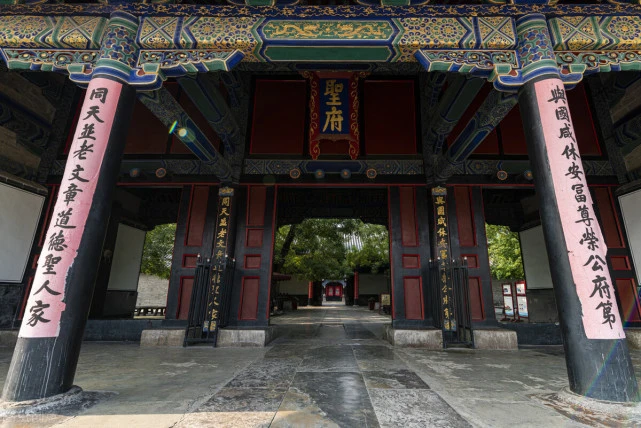The Three Confucian Sites of Qufu: The Sacred Ground of Confucianism, A Well of Ancient Wisdom

The Three Confucian Sites of Qufu, located in Qufu City, Shandong Province, China, consist of the Temple of Confucius, the Cemetery of Confucius, and the Kong Family Mansion. Together, these three sites form the core of Confucian culture, drawing countless visitors to pay homage and explore their rich history. As a UNESCO World Cultural Heritage Site, the Three Confucian Sites are not only symbols of ancient Chinese thought and culture but also essential destinations for understanding and experiencing the wisdom and spirit of Confucius.
The Temple of Confucius, also known as the "Temple of the Great Sage," is a grand temple dedicated to the worship of Confucius and is the most magnificent of the Three Confucian Sites. Originally built in 478 BC, the temple has been expanded and renovated over centuries, now covering tens of thousands of square meters. The temple is surrounded by ancient trees, with majestic halls and intricately carved beams, exuding a solemn and reverent atmosphere. Inside, statues and memorial tablets of Confucius are enshrined, and scholars and devotees visit annually to pay their respects to this great philosopher. As you stroll through the temple's corridors, you can almost feel the profound influence of Confucius' teachings and the enduring impact of Confucian culture.
The Kong Family Mansion, also known as the "Mansion of the Sage's Descendants," was the residence of Confucius' descendants. As the hereditary home of the Dukes of Yansheng, the Kong Family Mansion is the only family mansion in feudal China to have been passed down through generations as a noble residence. The mansion's architecture is meticulously designed, with luxurious interiors displaying numerous precious cultural relics and furnishings that showcase the history of Confucius' descendants and the continuation of Confucian traditions. Here, you can delve into the illustrious history of Confucius' family and experience the ancient rituals and cultural customs that have been preserved over the centuries.
The Cemetery of Confucius, also known as the "Forest of the Great Sage," is the family burial ground of Confucius and his descendants, and it is one of the oldest and largest family cemeteries in the world. The cemetery is filled with ancient trees, creating a tranquil and solemn atmosphere, with numerous tombstones marking the graves of generations of Confucius' descendants. Confucius' tomb is located at the heart of the cemetery, with a stone stele inscribed with "Tomb of the Great Sage and Teacher" standing before it, a testament to the deep reverence later generations hold for Confucius. Walking through the Cemetery of Confucius, you not only witness the continuity and legacy of family culture but also feel the weight and passage of history.
The Three Confucian Sites of Qufu are not only the birthplace of Confucianism but also a vital symbol of Chinese civilization. Each year, thousands of visitors and scholars come here on pilgrimage to explore the mysteries of Confucius' teachings and to experience the essence of Confucian culture.
If you are interested in Chinese culture and history, the Three Confucian Sites of Qufu are a destination you cannot miss. Every building and every stone tablet here tells the story of over two thousand years of history and wisdom, waiting for you to explore and discover.
HOT
- Mapo Tofu: A Classic of Sichuan Cuisine, A Spicy and Savory Temptation
- Longjing Prawns: A Delicate Delight from the Water Towns of Jiangnan, A Taste of Freshness and Elegance
- Squirrel-Shaped Mandarin Fish: An Artistic Masterpiece of Su Cuisine, A Sweet and Sour Visual Feast
- Chengdu Research Base of Giant Panda Breeding
- Shaolin Martial Arts
0 Comments
LEAVE A REPLY